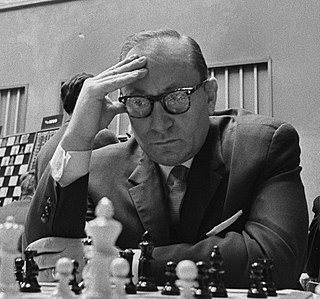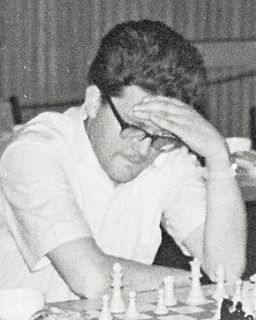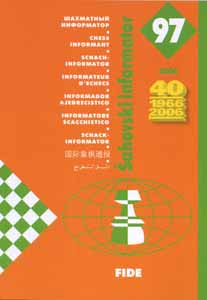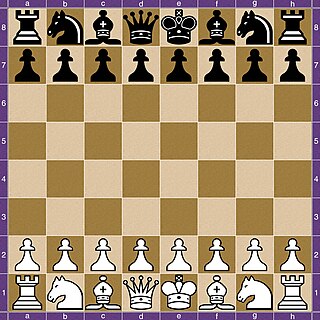Related Research Articles

Anatoly Yevgenyevich Karpov is a Russian and former Soviet chess grandmaster, former World Chess Champion, and politician. He was the 12th World Chess Champion from 1975 to 1985, a three-time FIDE World Champion, twice World Chess champion as a member of the USSR team, and a six-time winner of Chess Olympiads as a member of the USSR team. The International Association of Chess Press awarded him nine Chess Oscars.

Judit Polgár is a Hungarian chess grandmaster, generally considered the strongest female chess player of all time. In 1991, Polgár achieved the title of Grandmaster at the age of 15 years and 4 months, at the time the youngest to have done so, breaking the record previously held by former World Champion Bobby Fischer. She was the youngest player ever to break into the FIDE top 100 players rating list, ranking No. 55 in the January 1989 rating list, at the age of 12.

A chessboard is a gameboard used to play chess. It consists of 64 squares, 8 rows by 8 columns, on which the chess pieces are placed. It is square in shape and uses two colours of squares, one light and one dark, in a chequered pattern. During play, the board is oriented such that each player's near-right corner square is a light square.

Checkers, also known as draughts, is a group of strategy board games for two players which involve diagonal moves of uniform game pieces and mandatory captures by jumping over opponent pieces. Checkers is developed from alquerque. The term "checkers" derives from the checkered board which the game is played on, whereas "draughts" derives from the verb "to draw" or "to move".

Harold James Ruthven Murray was a British educationalist, inspector of schools, and prominent chess historian. His book, A History of Chess, is widely regarded as the most authoritative and comprehensive history of the game.
In chess and similar games, check is a condition that occurs when a player's king is under threat of capture on the opponent's next turn. A king so threatened is said to be in check. A player must get out of check if possible by moving the king to a safe square, interposing a piece between the threatening piece and the king, or capturing the threatening piece. If the player cannot get out of check by any of these options, the game ends in checkmate, and the player loses. Players cannot make any move that puts their own king in check.
Alexander Rueb was a Dutch lawyer, diplomat, and chess official.

László Szabó was a Hungarian chess player. He was awarded the title of International Grandmaster in 1950, when it was instituted by FIDE.

Modern Chess Openings is a reference book on chess openings, first published in 1911 by the British players Richard Clewin Griffith (1872–1955) and John Herbert White (1880–1920). The fifteenth edition was published in 2008. Harry Golombek called it "the first scientific study of the openings in the twentieth century".

Lothar Maximilian Lorenz Schmid was a German chess grandmaster. He was born in Radebeul near Dresden into a family who were the co-owners of the Karl May Press, which published the German Karl May adventure novels.

Chess Informant is a publishing company from Belgrade that periodically produces a book entitled Chess Informant, as well as the Encyclopaedia of Chess Openings, Encyclopaedia of Chess Endings, Opening Monographs, other print publications, and software. Aleksandar Matanović and Milivoje Molerović founded the company in 1966 for the purpose of offering the rest of the world the sort of access to chess information enjoyed by Soviet players. The company has sold three million books in 150 countries, according to its website.

64 was a Russian chess magazine and draughts publication, published in Moscow. Its name referred to the number of squares on a chessboard. The magazine awarded the Chess Oscar annually.

The game of chess is commonly divided into three phases: the opening, middlegame, and endgame. There is a large body of theory regarding how the game should be played in each of these phases, especially the opening and endgame. Those who write about chess theory, who are often also eminent players, are referred to as "theorists" or "theoreticians".

Hans-Joachim Hecht is a German chess player and twice the national champion. His first name is often abbreviated to Hajo.
Jacob Henry Sarratt was one of the top English chess players of the late 18th and early 19th centuries. Sarratt was renowned as a player and author and adopted the title "Professor of Chess". He was the first professional player to teach chess in England. He introduced into England the chess rule that a stalemate is a draw, which was commonly used on the continent of Europe. He coined with his works of 1813 and 1821 the term Muzio Gambit. He was a pupil of Verdoni and later the teacher of William Lewis and Peter Unger Williams.
Deflection in chess is a tactic that forces an opposing piece to leave the square, rank or file it occupies, thus exposing the king or a valuable piece. It is typically used in the context of a combination or attack, where the deflected piece is critical to the defence. Deflection may be used as a gambit to cause an opponent's piece to move to a less suitable square. Deflections are often used as part of a combination which may involve other types of chess tactics as well.

Libro de la invencion liberal y arte del juego del axedrez is one of the first books published about modern chess in Europe, after Pedro Damiano's 1512 book. It was written by Spanish priest Ruy López de Segura in 1561 and published in Alcalá de Henares.

Canadian checkers is a variant of the strategy board game draughts. It is one of the largest draughts games, played on a 12×12 checkered board with 30 game pieces per player.

Jean-Louis Preti was a musician and chess writer, specializing in the chess endgame.
Al-Adli al-Rumi, was an Arab player and theoretician of Shatranj, an ancient form of chess from Persia. Originally from Anatolia, he authored one of the first treatises on Shatranj in 842, called Kitab ash-shatranj.
References
- ↑ Murray, H.J.R. (1913), A History of Chess , Oxford University Press, pp. 782–784, ISBN 0-19-827403-3
- 1 2 3 Hooper, David; Whyld, Kenneth (1984). The Oxford Companion to Chess, Oxford University Press, p. 189. ISBN 0-19-217540-8.
- 1 2 Susan Polgar, Special Chess Records (February 11, 2008). Retrieved on 2009-1-11.
- ↑ Root, Alexey (August 17, 2021). "John G. White Collection of Chess and Checkers". Chess News. Archived from the original on January 24, 2022. Retrieved October 30, 2022.
- ↑ "Chess & Draughts collection". National Library of the Netherlands. Archived from the original on June 2, 2015. Retrieved October 30, 2022.
- ↑ See research guide, Chess Research Guide
- ↑ See SLV Collection page, Chess Collection page
- ↑ "A collector of chess books and paraphernalia, he has the largest private chess library in the world." David Hooper and Kenneth Whyld, The Oxford Companion to Chess (2nd ed. 1992), p. 358. ISBN 0-19-866164-9.
- ↑ "Schmid owns the largest private collection of chess books and other chess material." Harry Golombek, Golombek's Chess Encyclopedia, Crown Publishers, 1977, p. 290. ISBN 0-517-53146-1.
- ↑ Hooper & Whyld, p. 226 ("libraries" entry).
- ↑ Dirk Jan ten Geuzendam, "The Finest Chess Collection in the World", New in Chess , 2010, No. 5, p. 18. The title of the article refers to David DeLucia's collection, not Schmid's.
- ↑ ten Geuzendam, p. 19.
- 1 2 ten Geutzendam, p. 10.
- ↑ „Former world chess champion Anatoly Karpov’s writes about his collection“ Archived 2009-11-13 at the Wayback Machine , Stamp Magazine
- ↑ British Chess Variants Society "Variant Chess". Archived from the original on 2006-02-07. Retrieved 2006-01-24. "David Pritchard's files have been prepared for transfer to the Musée Suisse du Jeu, where they will be kept in the Ken Whyld Library and made available to future researchers." "Site updated 17 January 2010", retrieved March 13, 2010